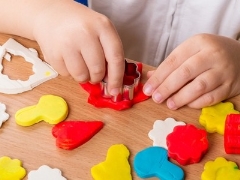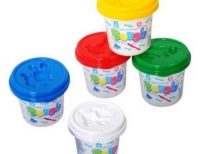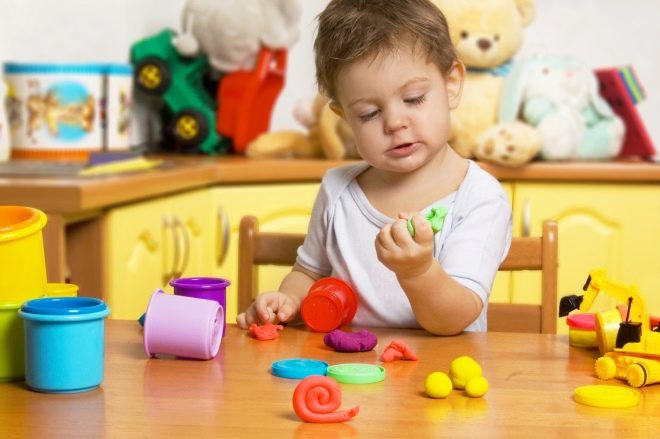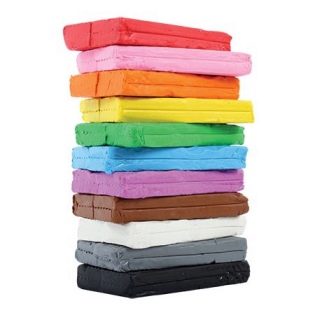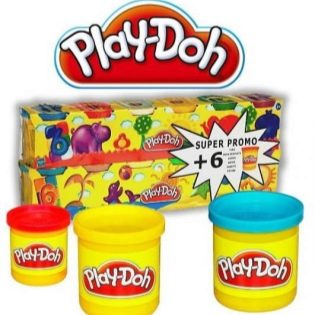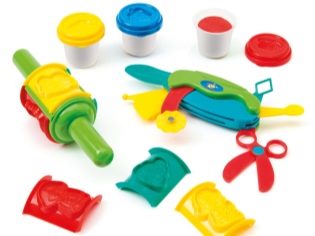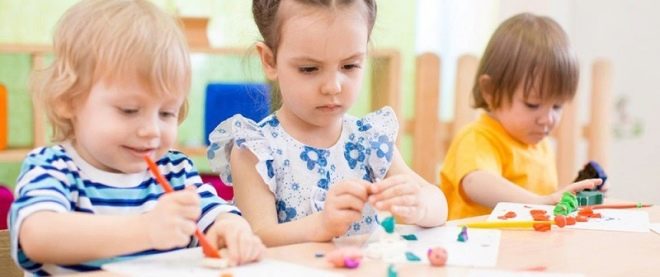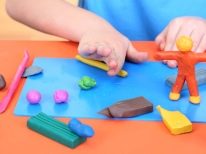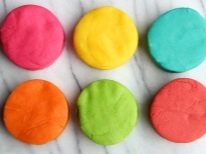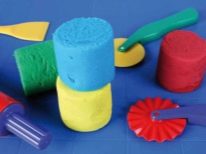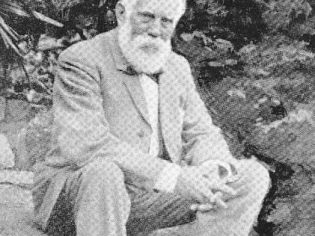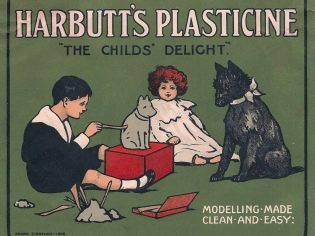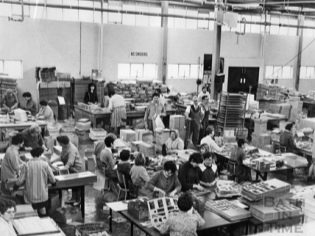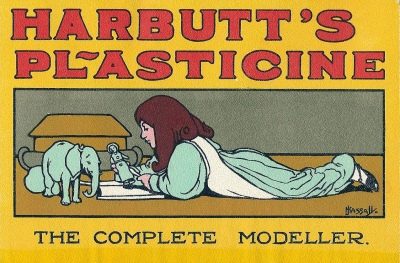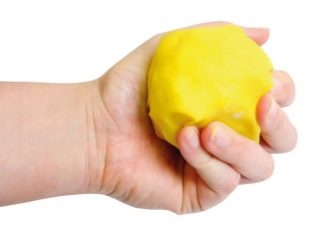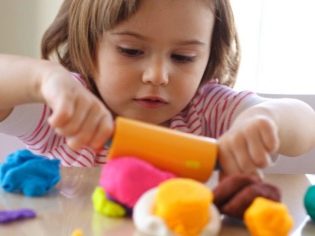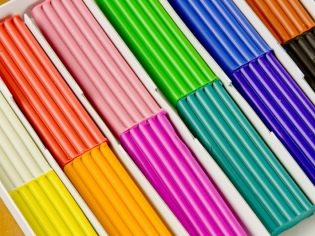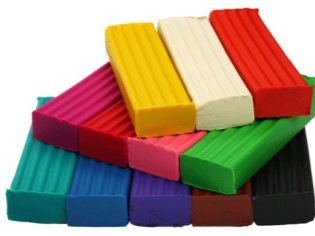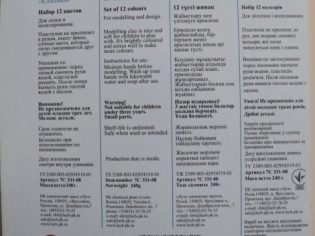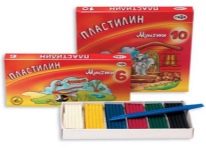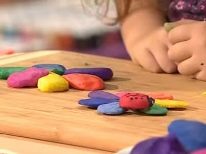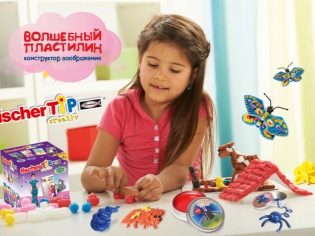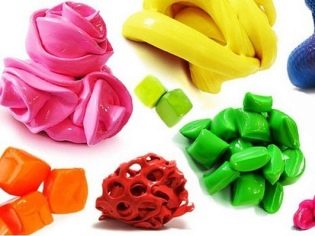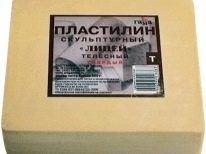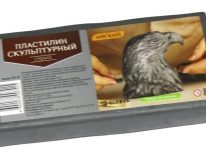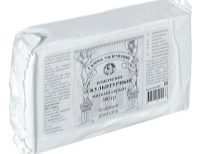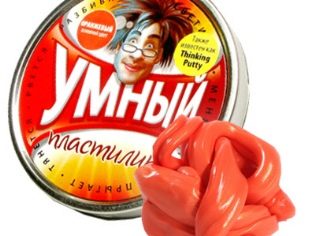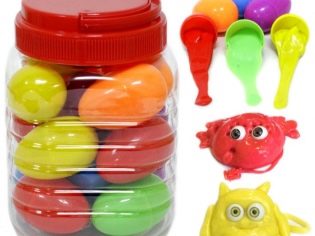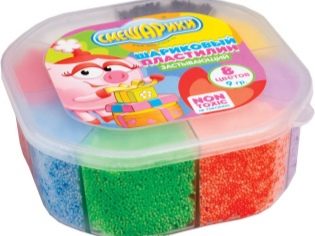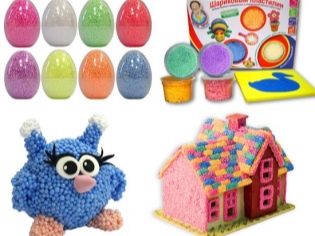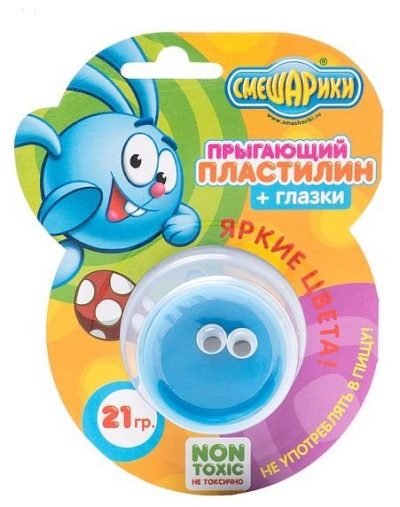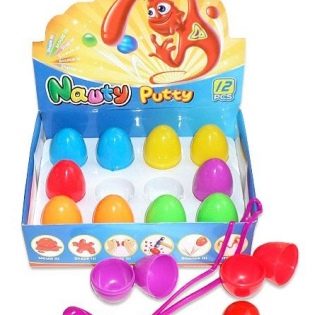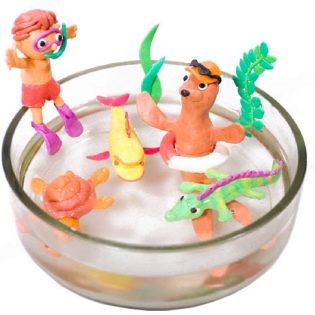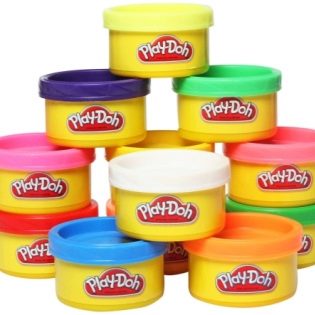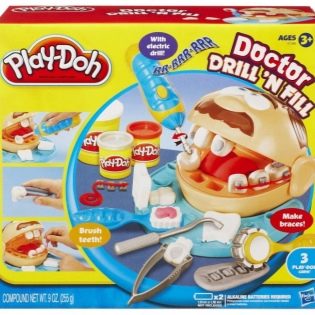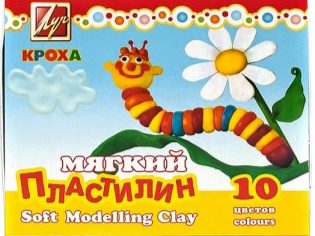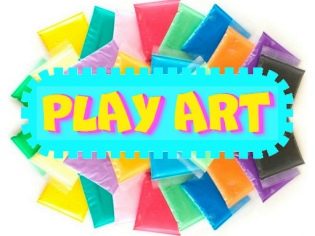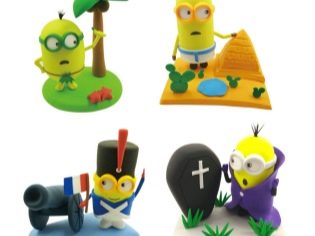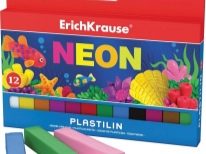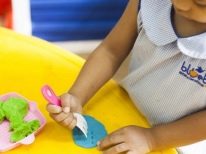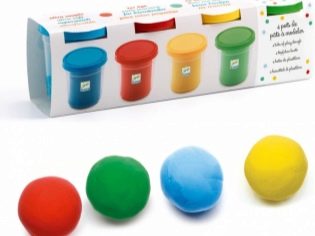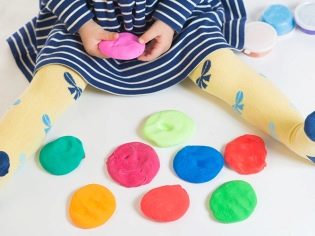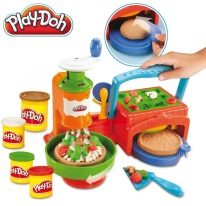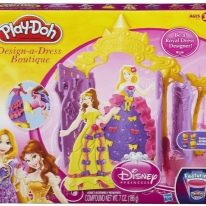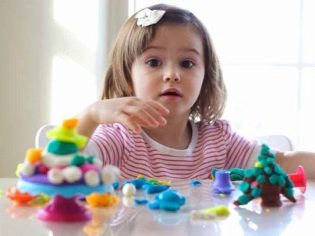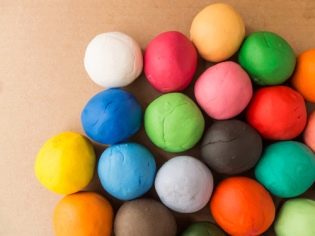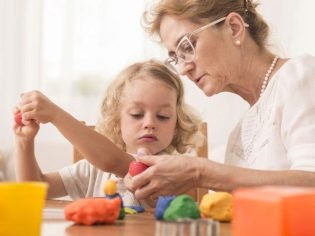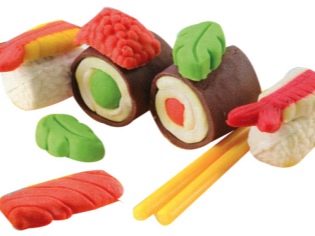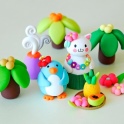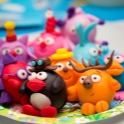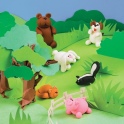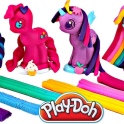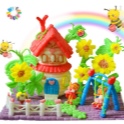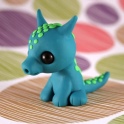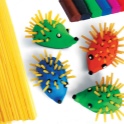Choosing children's plasticine
Perhaps, there is no such person in our country who as a child would not have dealt with clay. For so many children of preschool age, he is one of the favorite toys, and even modern gadgets are not always able to distract the kid from this plastic mass. But not only the universal love of kids for plasticine makes their parents buy it - it’s also useful for development.
However, all these statements are relevant only if, among the huge variety of modern types of this product, we select the optimal one and talk about it.
Beneficial features
When a toy has not only entertaining, but also a developmental function, adults pay double attention to it. Plasticine is a vivid example of just such an invention, and for several reasons.
First, this simple product is very contributes to the development of fine motor skills of the child. In infants the handles are very weak, and the awkwardness in any of its movements is noticeable to the naked eye. In order to use his hands normally for solving everyday tasks that seem to us to be absolutely simple, he will have to pre-pump up his muscles - special exercises could help him in this.
Of course, it is impossible to make a child systematically perform exercises every day, and the required will be achieved by itself - in the process of playing without a specific purpose. However, plasticine, itself also being a game, is at the same time a kind of exercise. That is why child development experts recommend purchasing clay for kids, even at an age when they are clearly not ready to create masterpieces, After all, you need to start with the simplest - with the preparation of arm muscles.
If even ordinary kneading of plasticine in the hands benefits a small child, then in the future This material is able to take possession of your own fingers to a whole new level. Sooner or later, the moment will come when the child tries not just to abstract a piece of mass, but to give it a form resembling something from the outside world - even if he doesn’t think of it himself, he will be prompted by parents or kindergarten teachers.
This task is already an order of magnitude more difficult, but it develops precise movements with the fingers, in addition, it is more interesting.
Secondly, the serious successes achieved in difficult exercises with clay, can push the child at least temporarily to take the path of creativity. Creativity is not the knowledge that needs to be stuffed into a child by force, but the opportunity to try yourself in it should be guaranteed to every child, and absolutely should not be discouraged by him if he is interested and he succeeds.
Moreover, in this situation, parents are obliged to contribute to the expansion of opportunities for employment, since they can be an excellent method of self-realization.
You must admit that it is always pleasant when everyone praises you for the ability to do something that most of those around you do not succeed in, and for a child praise is especially important.In addition, if the baby is not deprived of talent, and will persist for years - not at the insistence of parents, but on his own will - it is possible that with time he will gain wide recognition and success in society, not to mention the bonus in the form of a confident material condition .
Great sculptors, too, didn’t create their masterpieces from the first time, and creative thinking develops this activity very well, so it can lead to branches that are not completely connected - for example, to design.
Thirdly, modeling clay has many other minor advantages. For example, a child engaged in modeling is at least not doing something harmful at the moment, but he could stick his fingers into an outlet, try to break something, and so on.
Against the background of sharp criticism of the growing popularity of modern gadgets among children, up to the formation of dependence, clay in the early stages of life can show the kid that the world exists not only in digital terms. Child psychologists also Plasticine tend to be an excellent sedative.
History of creation
As it often happens, clay was not originally created for the purpose, which eventually became the main one. However, even now he successfully performs, among other things, those tasks for which he was once specially created, however, for the sake of which the absolutely dominant part of it is produced today, at first there was nothing to do with it.
It all started with an Englishman William Herbatt. Even as a young man, the young man decided to devote himself to art and received an appropriate education, but later he engaged not in actual practice, but in teaching students his beloved work. Apparently, he really had a talent and loved his work, as he quickly gained a reputation as an excellent teacher, and even was able to open his own school of the appropriate profile, which enjoyed a good reputation.
Herbatt, in the process of teaching, drew attention to one moment, which very much prevented his students from achieving new heights, namely, the too rapid hardening of clay, which at that time was the main teaching material for future sculptors. While his students at the initial stages performed simple tasks, everything was fine, but when the turn of more complex sculptural forms came, the students simply did not have time to finish the sculpture in one lesson.
The unfinished product had time to dry before the work on it continued, and the new soft parts were poorly molded to the hardened surface, in fact, not allowing the master to be interrupted in the process.
If Herbatt didn’t like his job, he would put the problem on the shoulders of students, but he loved his job, so he decided to try to find a way to prevent the clay from rapidly hardening. The story did not preserve the exact number of compositions it tried, but it is believed that there were hundreds of them. After several years of testing and comparing, Herbatt concluded that a mixture of chalk with petroleum jelly and stearic acid.
The resulting substance had a consistency suitable for modeling educational sculptures, but not temporary, but permanent, it was non-toxic, and even allowed for reuse, because under mechanical influence easily took a different form, and even melted with gentle heating.
In 1897, Herbatt, for the first time, distributed to his students his invention, called Plasticine (the modern English name for plasticine), seeing in it at that moment only a textbook. However, the rumors about the new material quickly spread in the creative environment and reached the already formed sculptors, who, before creating their masterpieces, wanted to practice on more compliant materials, so they began to turn to Herbatt to give them some of this mixture.
But if adults perceived it rather as a means, albeit for a simplified, but nevertheless only one of many methods of modeling, especially far from eternal sculptures, then the children invented an indescribable delight for children. By that time, Herbatt already had his own grandchildren, and in his house he could visually see how the kids relate to such a toy.
Realizing that his invention claims the status of genius, he patented his recipe along with the name, and two years later began the commercial production of mass - now painted in different colors with a clear eye on children.
In the future, many developers made their own additions to the compounding of the mixture, achieving new properties, with the result that today we have many types of clay for various needs - from children's creativity to engineering design.
What should be children's clay?
Since plasticine, as we found out, can be used in various fields where different characteristics are important, it turns out that not any kind of it is suitable for children. But even of those species that are focused directly on kids, there are more and less quality ones. If the mixture is purchased specifically for children's creativity, it is better that the following properties are inherent in it:
- Softness and plasticity. Too hard plasticine is not suitable, if only because the kid cannot sculpt him with his small, weak hands, or he will have to make great efforts to do this, which is unlikely to help interest the child. At the same time, it must have a sufficiently high density in order to keep the shape well.
- Stickiness to yourself. A child should be able to create his creations not only from a single piece of mass, but also from individual small pieces, and for this it is necessary that they are well glued together.
- Lack of stickiness to other subjects. Older people may be surprised, but plasticine does not necessarily have to stick to hands, and also pollute clothing and furniture. Many modern species are completely devoid of this negative quality. Of course, this advice is more important not for children, but for parents, but this is because the latter choose it.
- The possibility of mixing colors. The more clay in a set of colors, the better, because the only way to fully develop the imagination of the baby. No set has an infinite number of colors, but the problem is solved by mixing different shades in different proportions. Unfortunately, with cheap varieties of the mixture is not so simple - often mixing them gives not the result expected by the drawing lessons, but a mass of unintelligible color.
- Security. Of course, plasticine should be completely non-toxic - manufacturers write about it on the packaging. Experts also argue that, contrary to the common fashion, it is better not to acquire clay with a "tasty" smell - the child may want to try the mixture, but it is not poisonous, but it can block the airways.
Features of the chemical composition
The original type of plasticine created by William Herbatt was completely non-toxic, however, over time, manufacturers began to significantly change the composition of the mixture - someone to get new, more interesting qualities, and someone in a banal attempt to reduce the cost of the product.
Sometimes it even contradicts the use of mass for children's creativity, because when in contact with hands, the substance may be safe, but only children like to pull everything into their mouths, and they don’t even have to try to swallow the mass in order to make problems for themselves. In short, progress does not always move in the right direction, and parents should be attentive.
Before buying, pay attention to the composition written on the package.and if it is not specified, consider whether it is worth buying such a product at all.Normal ingredients for modern plasticine are clay, ceresin, wax, industrial oil and dyes. The latter, by the way, are a very vague concept, because they are both organic and harmless, and dangerous chemistry.
If the dye is described as natural, clay with a similar composition can be safely bought.
However, the components may be different, and even not necessarily harmful at the same time. For example, the famous clay Play doh It has an impressive ecological approach - it consists of water, salt, wheat flour, as well as dyes and binders of natural origin. Obviously, such a product, even being fully eaten, will not bring harm, however, the manufacturer did not release it for this purpose, so he took care that the children did not like it - for this, it was overdone.
However, much more often manufacturers use far less innocuous alternatives to common ingredients, namely, synthetic solvent, silicone thickener, artificial flavor, and so on. We will not argue that the listed components are necessarily harmful, however, they clearly do not have a full-fledged counterpart in nature, and parents, if only they do not have a special education, will not be able to determine the degree of safety of such a substance for the child.
By the way, experts advise to pay attention to the smell - almost all flavors are of synthetic origin, and if plasticine has an unpleasant, obviously not specially made flavor, then this is one hundred percent indicator of harm.
Variety of tools for modeling: advantages and disadvantages
The modern variety of options for plasticine allows you to make a choice with the subtlest wishes of the client, because different types have completely different characteristics. Some mixtures, by the way, are not plasticine in the literal sense, and are not even called by this word, however, due to the similar purpose and for the purposes of classification can be considered as its varieties. Consider what manufacturers offer today.
Magic
Needless to say, we are not talking about any magical properties, but the brand name is called that, and the peculiarity of such clay is that it is non-drying. This is a great purchase not for those kids who already demonstrate real talent and want to create eternal masterpieces, but for beginners who are just beginning to learn and still have little strength to knead the mass on their own. Non-volatile clay in their hands every day will turn into something new!
Plasticine that freezes in the air
This type is the complete opposite of the previous one, since products made of it are frozen for just a day in the open air to such an extent that reuse is not at all possible. Because of this particular feature, this mixture is in no way applicable for learning, because it is no longer possible to remake an unsuccessful figure or make another from it.
However, it was not designed for this either — it is made for those children who obviously know how to sculpt, and they want their work to last for a long time. In our country, such or similar products received other names - for example, sculptural clay or velvet plastic.
Smart
Also known as handgun or chewing gum. This strange substance is not very suitable for creating figures, and to a greater extent is a kind of a trainer of fine motor skills. Its essence is that it is able to turn into a liquid by itself (without heating, under the influence of gravity), and then freeze again, this substance also perfectly adheres to itself, but does not leave the slightest trace on hands or clothes in quality sets .
It is actively used even by adults in the form of anti-stress and "time killer", but the children have already appreciated this method of use.
Ball, or grainy
In general, the properties are similar to normal, but are not homogeneous mass, but separate small balls of a certain color. It looks very bright and attractive, is often used not as an independent material for handicrafts, but as an aesthetic decoration for them - for example, they often cover figurines from classical clay.
Leaping
It is, rather, not a kind of mass, but a property that can be inherent in any of the types already mentioned. A product made from it, falling from a height, is not deformed, like classical clay, and does not even break up into pieces, but bounces like a ball, because of which the mixture has also received another name - rubber clay.
Floating
This view should appeal to those children who love to swim in the bath with their toys, because the products from it do not sink. Consumers praise him for the special softness that allows children to use it with any force of hands, but it is often possible to meet negative opinions about this type - they say it is relatively poorly molded.
Top manufacturers
Today, there are many manufacturers of plasticine on the market, and their products, of course, are not the same in quality and properties. It should immediately be said that the well-known domestic brands “Luch” and “Gamma” usually collect mostly negative reviews - this is the classic clay of the old school, poorly mixed in colors and very easily soiled. If you talk about more popular brands, you usually distinguish the following:
- Play doh If you have children and you are actively interested in related topics, you simply have to know what Hasbro is, which produces toys adored by children all over the world with billions of pieces. This company is the author of this brand and it is impossible to find fault with such plasticine, because it is not just natural, but even made of edible components.
A minus is one, but fat: all products of the company are very expensive, and plasticine is not an exception.
- Koh-i-noor. The famous Czech brand made a name for itself mainly on pencils, but it positions itself as a “product for creativity”, so they also have clay. The most adequate comment is a good ordinary clay, without any impressive properties, but also without any grounds for criticism. Soft, well suited for small children.
- "Baby". As you can see, Russian brands are able to surprise not only in a bad way. Plasticine of this brand has a special softness, it is not something that succumbs to weak children's hands - they can even draw! Due to this, the child can discover a completely new way of drawing, creating three-dimensional paintings, the relief of which, if necessary, can be corrected directly with your hands.
- Play Art. This company focused on the release of the so-called 3D clay, which is easily molded and does not get dirty, and within 24 hours after the molding finally solidifies and takes on a permanent form. The material is actually intended for the independent creation of toys, which, by the way, do not break when struck, but spring, which allows you to make even a full-fledged ball. The set sells colored clay, which can be mixed to obtain new shades, but the creators indicate that after curing, the product can also be painted in any available way.
- Erich krause. Another popular brand for modeling, which is chosen for the brightness of colors and a relatively low price with acceptable quality. They note that for all the budget, the manufacturer did not forget to wrap each bar separately, in many sets there is also a stack for modeling. Among the shortcomings they point out that the hardness is too high for a preschooler.
- Art berry. In principle, this product is also produced by the company described in the previous paragraph, but it represents a completely different type of product - it is a vegetable-based dough, which is frozen within 24 hours.Such a dough has a bright color and is great for horizontal molding, but its complex vertical shape, especially its compound shape, holds up poorly. Over time, the strongly dried dough begins to crumble, so that even the figure made from it will not be eternal, and it will not work to restore elasticity with the help of water.
Such a solution is not for sculpting, but for playing with special tins, which are also included. For this reason, his goal is not creativity, but rather the entertainment of the smallest.
Interesting kits and accessories for children
Given the diversity of types and uses of clay, modern manufacturers have already completed their sets not only with the mass itself for modeling, but also with various interesting additions.
For the youngest child
Here it is better to choose plasticine of natural origin, 10 colors for the first time will be quite enough. Such a mixture is often, in fact, a dough, and officially it is so called, therefore, not having a solid stable form, it is sold in separate jars, which, by the way, can be even smaller - up to 3 colors, or even by the piece .
According to the method of application, such a product is somewhat similar to sand from a sandbox, but, unlike the latter, it often dries out over time and begins to crumble without the possibility of plasticity recovery, so it must be immediately removed into the container each time they are not played.
Creativity in the direction
Some sets involve creativity in the direction given by the creators. The kit may include special molds, allowing you to easily shape those or other characters, in addition to which there are various game accessories made of plastic. Sometimes plasticine allows for external coloring of the finished figure - then the templates are sometimes also supplied for drawing.
Such a complex work in the mass dimension is more interesting for girls, but boyfriend-themed kits are also sold.
For children of primary school age
But for children of primary school age, showing a certain talent, you should choose a material with a large space for creativity. 12 colors may not be enough, but 24 will allow the child to choose the optimal shade or very accurately create his own, not to mention the fact that a wide palette automatically means a large amount of material.
However, the color may be altogether one - white or black, however, then such clay needs to be colored after solidification. Although the latter option seems less interesting than modeling from colored clay, it allows you to create much more complex and believable images.
Modern options for modeling
It happens that the children simply do not know what to try to make from clay. The dog remains the eternal theme, but you will not always sculpt the same thing, because many children quickly lose interest in the process. If a child has talent, but he is a little tired, and you do not want the child to abandon the modeling or just want to increase the interest of the child in this activity, tell him that not only classics, but also any new character can be a source of inspiration.
If plasticine refers to the fact that over time freezes, the child could try to blind themselves for themselves new toys. Inspiration can be as those toys that he already has, and those of which he only dreams. This is a good motivation for those children who have favorite cartoon characters whose figures are not sold in our country.
Of course, the task is by no means simple, so parents will probably have to help the kid with creating the figurine, but imagine the joy of the child if the result really goes out to fame.
Girls are more prone to such complex creations, but the characters suitable for their interests are somewhat less typical princesses (for example, Elsa from Cold Heart or characters from any other Disney cartoons), as well as ponies from the famous franchise My Little Pony. The interests of the boys are somewhat broader, although much of their favorite characters can be appreciated by girls.
Since the boy needs something more courageous, you can blind, for example, Shrek, and if you choose an example to follow among the truly new stories, try to recreate the monsters from clay FNaF - Five Nights at Freddy's, another very popular children's cartoon of recent years.
How to choose a safe clay, see the following video.
